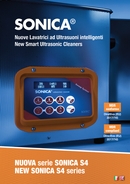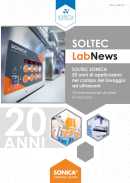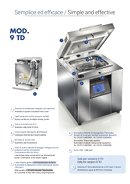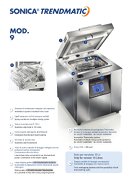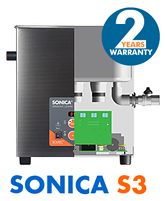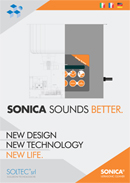Use of SONICA® ultrasonic bath for the extraction of atmospheric particulate matter from Teflon filters
Submitted by staff on Fri, 06/08/2018 - 11:03

Use of SONICA® ultrasonic bath for the extraction of atmospheric particulate matter from Teflon filters
Polaris Research Center, related to the Department of Environmental Sciences of the University of Milan Bicocca, has been using the SONICA® ultrasonic extractor for the extraction of both polycyclic aromatic hydrocarbons (PAH) and atmospheric particulate matter (PM) from the filters (figure 1).
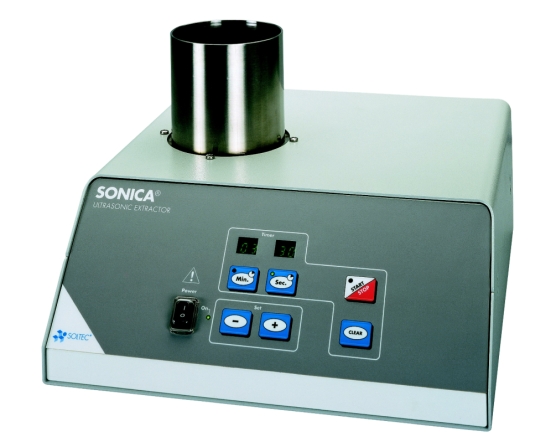
Figure 1: SONICA ultrasonic bath for the extraction of atmospheric particulate matter.
The efficiency of the PAHs extraction process from atmospheric particulate matter samples has been previously analyzed and published by the Polaris Center’s researchers. The research paper describes the use of this instrument for the extraction of PM in order to carry out toxicological studies on in vitro systems. The procedure for the extraction of the PM is very different from the one concerning the extraction of the PAHs. The main difference is represented by the necessity to work in a sterile environment since the extracted PM will be used to treat cultured cells. In fact, any bacteria or fungus would infect the culture. This is why the instruments used during the extraction process (tweezers, scalpels, vials) need to be previously sterilized through a cycle of ethanol washing and some phases of this process are performed under a sterile flow hood.
First of all, the PM is sampled with the low volume gravimetric system on Teflon filters (with a diameter of 47mm) which are stored at -20°C until extraction. This step prevents the proliferation of atmospheric bacteria in the sampled PM and the evaporation of volatile compounds.
The filters then undergo the extraction process: they are detached from their plastic holders by using previously sterilized tweezers and scalpels (figure 2) and are placed in a sterilized amber vial with 2 ml of sterile water. Since the filter is completely immersed in the organic solvent during the entire extraction phase, it is held at the bottom of the vial by a special SONICA® spacer made from special steel. The vial is then inserted in the extraction support and placed in the ultrasonic bath for 20 minutes. In this amount of time the water will tend to get warmer: it is important to avoid this kind of situation since it could cause the evaporation, therefore the loss, of the volatile compounds. This is why the tank of the extractor is filled with cold water (4°C).
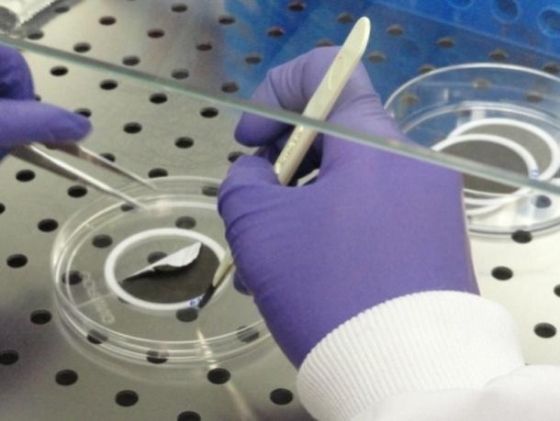
Figure 2: the Teflon filters are detached from the plastic holders; sterile tweezers, scalpels and gloves are used to avoid contamination and the whole process is done under a laminar flow sterile hood. The filters are black because of the presence of PM.
At the end of this first sonication the extract is removed from the vial and stored in a sterile container until the whole extraction process is over. Once again the vial is filled with 2 ml of sterile water and the extraction cycle repeated. 4 sonication cycles of 20 minutes each are performed in order to make the extraction process more efficient. At the end of the 4 cycles the amount of extract obtained is 8 ml. It is then placed in sterile plastic vials previously calibrated and dried with a drier that has been arrayed with silica gel (figure 3).
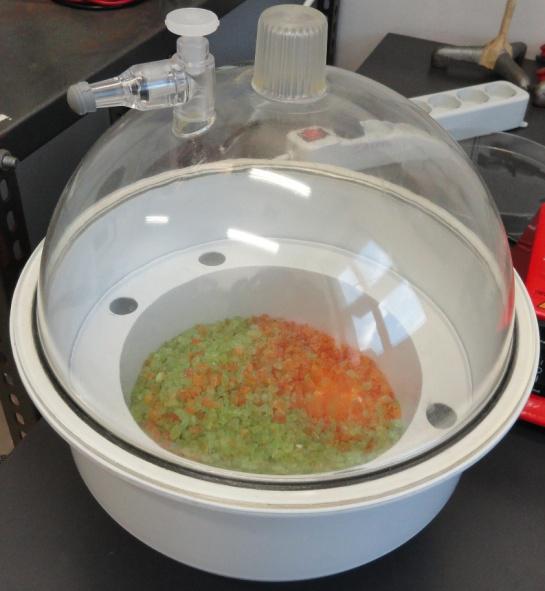
Figure 3: Drier with silica gel.
The drying process takes approximately three days in which the samples are stored in a dark place to prevent possible phytochemical reactions of the chemical compound. Once this process is over the vials are weighted once again to quantify the extracted PM, which is then stored at -20°C until it has to be used. It is now resuspended at a 2ug/ul concentration and used for the exposition of the cells in culture.
Milan, January 9th 2013
Marina Camatini
President of the Polaris Research Center
Polaris Research Center - Piazza della Scienza 1, 20126 Milan
- 1769 reads
- Italiano

